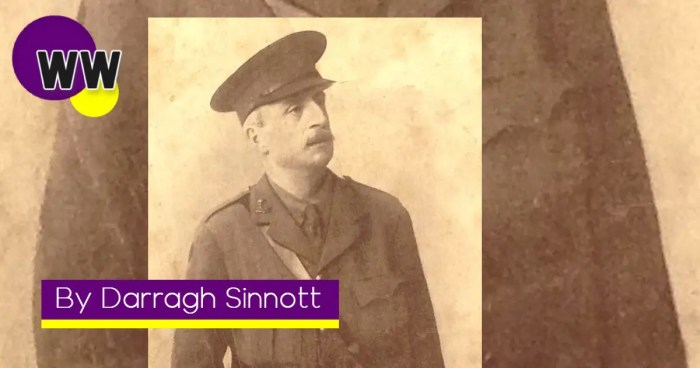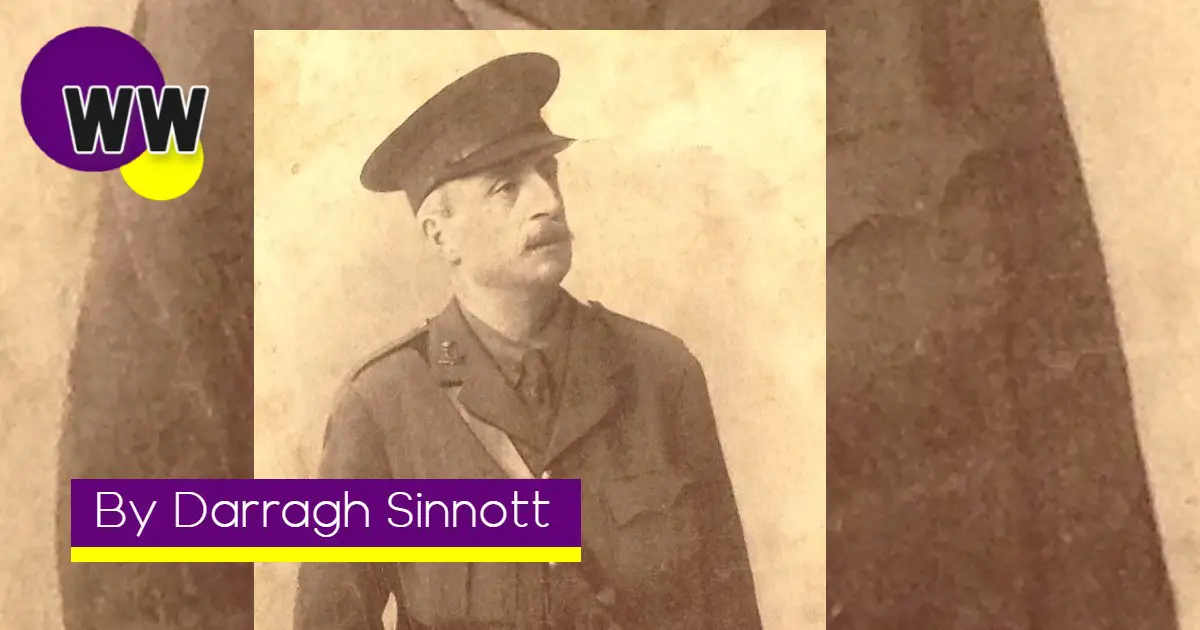In the annals of Wexford history you may see many familiar family names, constantly at the centre of life in the county, the Corishes, the Grogans, the Esmondes all have had a considerable impact on the history of the county. But throughout Wexford’s long history, very few families have had as considerable impact as the Redmonds….
The first of the Redmond family arrived in Wexford around the time of the Norman invasion in 1169, Raymond Fitzgerald or Raymand Le Gros as he was more commonly known took up residence on the Hook Peninsula, his home became known as Redmond Hall (more commonly known today as Loftus Hall).
From playing a prominent role in the invasion, the Redmond family became a prominent Catholic family in County Wexford. From High Sheriff of County Wexford Patrick Redmond to his brother John E. Redmond, a Liberal MP for Wexford, for whom Redmond Square is named and in whose honour the Redmond Monument was erected.
William Archer Redmond was an ardent Home Ruler and was elected as an MP for the Home Rule Party. He would go on to have two very famous sons whose names would be found not only in the annals of Wexford history, but would be vitally important to Irish history as a whole. John Redmond was born in 1856 and would go on to lead the Irish Parliamentary Party. Due to the significance of John’s time in politics, his younger brother Willie is often forgotten.
COMFORTABLE BEGINNINGS:
Willie was born to William and Mary Redmond (neé Hoey) on April 13th 1961. Unlike his father a Wexford Catholic, his mother was a protestant from neighbouring co. Wicklow. Willie had a very idyllic childhood in Ballytrent House which is situated near enough to Kilrane in County Wexford. In a time when many did not live a life of any great luxury, Redmond was certainly among the upper classes in society.
He received his secondary education at Clongowes Wood School in county Dublin. Following his secondary education, he gained an apprenticeship as a Merchant Ship Sailor and he soon enlisted in the Wexford Militia of the Royal Irish Regiment, it is said at the time he even considered a full-time military career.

POLITICAL BEGINNINGS:
Willie followed his family’s tradition of involvement in civic life and became an ardent supporter of prominent nationalist politician and Home Rule MP, Charles Stewart Parnell. His first involvement in politics came when campaigning for Parnell in the 1880 General Election. He became involved with the Irish National Land League and due to his activities shared a prison cell in Kilmainham Gaol with Parnell for three months.
Unlike his brother John, Willie was much more radical on the issues of nationalism and social change. John would be rightfully criticised for his conservatism and lack of ambition on the national question however in his earlier days in stark contrast with his brother Willie was a radical nationalist and loyal to Parnell even after his fall from grace.
INTO WESTMINSTER:
In 1883 Willie was elected as a Home Rule MP for county Wexford and would later go on to be elected in East Clare. He was ardent in his support for Home Rule. His whole ideology stemmed from the belief that Britain had destroyed Ireland through sectarian division and had grievously wounded her people and her industries and that the only way to mend the damage done was to gain self-government for Ireland. He was also very active on other contemporary issues such as women’s suffrage.
Unlike his brother John, Willie was very much for women getting the vote, placing him among the more liberal politicians of his time. He married Eleanor Mary Dalton in February of 1886, they had one son who tragically passed away at the age of 5 in 1891. In that same year, he was called to the Irish Bar as a barrister. He never practiced law and made his living from his political career with the Irish Parliamentary Party. In 1892 he was elected in East Clare.
LATER YEARS:
Although the latter years of his career would see a slight shift toward a more conservative and less radical view on the national question Redmond had by no means become a compliant cog in the Westminster machine. He was very strongly opposed to the Boer War and became co-treasuer of the Irish Transvaal Society.
In adopting this position, he placed himself among the likes of James Connolly, Arthur Griffith and Maude Gonne. Tempting and all as it may be to classify Redmond as a radical nationalist come to the end of his career it is very clear to see his political ambition did not stretch beyond Home Rule, he could not be described as an Irish Republican. Willie had been involved with the Irish Volunteers yet he sided with his brother John and became a leading figure in the National Volunteers who decided to go to fight with Britain in the First World War.
He did not support the Easter Rising of 1916 and made sure to reassure the House of Commons that the Irish people’s sympathies lay with the Allied cause in the war. Although as a young man he had echoed the mantra of the Republicans of his time when he stated “England’s difficulty, under the providence of God, is Ireland’s opportunity”, he no longer identified with such rhetoric. He believed Home Rule had been granted under the Third Home Rule Bill of 1912 and that it would be granted following the war. In his eyes, Ireland was now no different to New Zealand or Canada, a self-governing state within the Empire. It seemed he had no real ambition for any more radical form of self-government.
TO THE BATTLEFIELD:
John Redmond is often criticised for sending young Irishmen off to die for Britain while remaining at home himself yet Willie cannot be criticised in such a manner. Although 53 years of age, out of shape and with a head full of grey hairs, Willie signed up to fight in the Royal Irish Regiment and was granted the rank of Major. Stated that his credentials and the credentials of his family as committed Irish nationalists were doubtless yet he felt compelled to go and fight in the war.
At the time in the minds of the Home Ruler, an Irish patriot could also be a British soldier, or at least that was the ideology of John Redmond at the time. He felt appalled by the German invasion of Belgium stating “the Belgians never did Germany any harm”. He also believed that now Home Rule was to be delivered Ireland’s quarrel with England was over.
He addressed a group of Irish Volunteers in Cork in 1914 and stated:
“And when it comes to the question, as it may come, of asking young Irishmen to go abroad and fight this battle, when I am personally convinced that the battle of Ireland is to be fought where many Irishmen now are, in Flanders and France, old as I am, and grey as are my hairs, I will say, ‘Don’t go, but come with me’.”
Unlike his brother he did not simply ask young Irishmen to fight in the war he took up arms and fought in the trenches with the rest. He was supposedly kept out of harm’s way during the bloody Battle of the Somme. Redmond experienced the horrendous conditions of the trenches throughout 1915 and 1916 and was offered a cushy job away from the front line, he rejected this idea entirely. He made his final visit to the House of Commons in 1917 dressed in full military regalia.
On the 7th of June 1917, Willie was commander of B Company of the 6th Royal Irish Regiment and fought as a part of the 16th Irish Division alongside the 36th Ulster Division at the Battle of Messines Ridge. He had pleaded with his commanding offers to allow him to go over the top with his men, unwilling to order his men to do something perilous that he would not expose himself to. His commanders relented, this decision from Major Redmond may have been gallant but it would cost him his life. He was hit almost immediately in the wrist and leg. The shock from his injuries proved too much. He passed away a field hospital in Belgium on the 7th of June 1917.
Most newspapers in Britain and Ireland led with the story of the MP’s death, John Redmond and his wife received over 400 messages of sympathy. Even Willie’s political rival, ardent unionist, Sir Edward Carson MP paid tribute to him. His lone grave is to be found in Loker, Belgium. His name was etched onto the Redmond Obelisk. A bronze bust of Major Redmond can be found in Redmond Memorial Park in Wexford town. Due to the fact that when he died he was a sitting MP, his death triggered a by-election in East Clare. The Irish Parliamentary Party fielded Patrick Lynch as a candidate however he was blown out of the water by Sinn Féin candidate, future President of Dáil Eireann, founder of Fianna Fáil, Taoiseach and President of Ireland, Éamon De Valera.
Redmond’s attitude toward his part in the war is very well summed up in an attachment to his will where he stated:
“I should like all my friends in Ireland to know that in joining the Irish Brigade and going to France I sincerely believed, as all the Irish soldiers do, that I was doing my best for the welfare of Ireland”.
Read also:
Remember to submit your news to Wexford Weekly! To advertise on our socials or website, email our team at info@wexfordweekly.com


